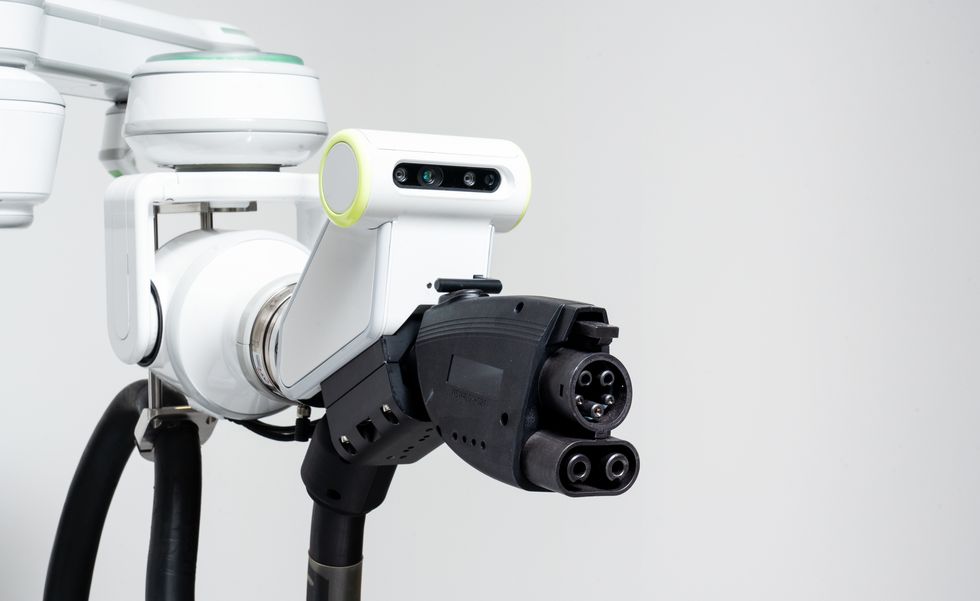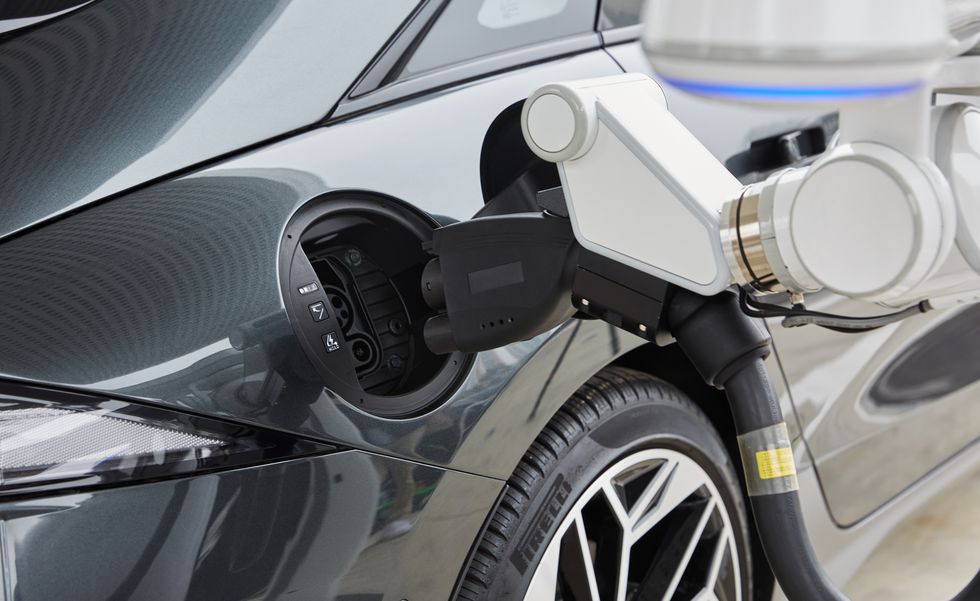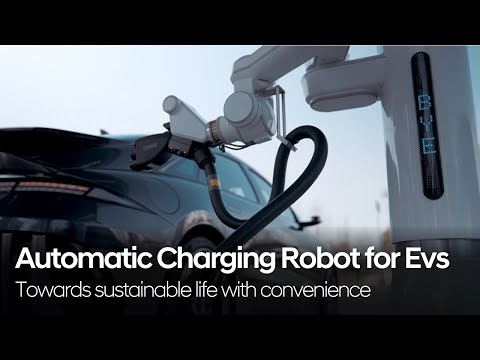Hyundai/Kia Develop a Robot for Hands-Free EV Charging

Plenty of ideas exist to eliminate the trouble of plugging an EV into a heavy charging cable. From wireless pads to robot arms, people have been working on this technology for a while now.Hyundai Motor Group is the latest to investigate human-free EV charging tech and will display its new Automatic Charging Robot at the Seoul Mobility Show that starts next week.Using a built-in laser, cameras, AI wheels, and a movable arm, the ACR can—with the right EV—make charging your Ioniq 6 as easy as pushing a button on the key fob.
As simple as it can be to charge an electric vehicle at a known location like home or work, it could always be easier. WiTricity is working on wireless EV charging and has been for a decade. In 2015, Tesla showed a video of a metal “snake” that could plug a charging cable into an EV automatically. Ram is working on an inductive charging robot for its upcoming electric truck. This month in Seoul, Hyundai and Kia will display the latest of these automated charging technologies, this one called ACR.
Hyundai
The Automatic Charging Robot is somewhat similar to Tesla’s metal snake, but it is more advanced. The snake had a proprietary Tesla connector built in, while the Hyundai Motor Group’s ACR instead has a hand that can hold different plugs. Granted, most of the time, it will use a J1772 or CCS connector, but it’s good to see this kind of forward-thinking compatibility. In fact, HMG designed the ACR to operate in any environment, “regardless of charger location, weather and potential obstacles,” the company said. It’s a waterproof and dustproof (IP65 rated) robot that uses a stationary safety pole with a built-in laser sensor installed in the ground nearby to warn the robot when it might run into a stationary or moving obstacle.

Hyundai

Hyundai
This is the “isn’t it fabulous” version of how the ACR is supposed to work. You park your car where it will charge up—or simply nearby, if the EV can then park itself—and tell the system to initialize charging from the key fob. The car that the ACR is attempting to charge up has to have a charging port door that can open without human interaction, and the ACR communicates with the car to open it up. The wheeled ACR then moves closer to the car and uses a 3D-camera-based artificial intelligence algorithm to determine where the charging plug is and extends the cable to the port. When the EV is charged up, the robot arm moves away.
This content is imported from youTube. You may be able to find the same content in another format, or you may be able to find more information, at their web site.
Newly Developed Automatic Charging Robot (ACR) For Electric Vehicles l Hyundai Motor Group
Watch onYouTube IconYouTube Icon
Hyundai released a video of the ACR in action, and this time it’s the real thing. In July 2022, the automaker released a computer-generated video showing the robot’s potential. The head of HMG’s Robotics Lab, Dong Jin Hyun, said the ACR can be a particular help for “people with mobility barriers, as charging cables become thicker and heavier to enable high-speed charging.”
For now, the ACR is just a cool toy on display at the 2023 Seoul Mobility Show. But HMG said that it predicts robots will offer support for EV charging in the “near future.” Whenever the ACR or any of the other charging simplification technologies arrive, it’ll be the next concrete step that makes driving an EV more accessible and convenient.
This content is imported from youTube. You may be able to find the same content in another format, or you may be able to find more information, at their web site.

Contributing Editor
Sebastian Blanco has been writing about electric vehicles, hybrids, and hydrogen cars since 2006. His articles and car reviews have appeared in the New York Times, Automotive News, Reuters, SAE, Autoblog, InsideEVs, Trucks.com, Car Talk, and other outlets. His first green-car media event was the launch of the Tesla Roadster, and since then he has been tracking the shift away from gasoline-powered vehicles and discovering the new technology’s importance not just for the auto industry, but for the world as a whole. Throw in the recent shift to autonomous vehicles, and there are more interesting changes happening now than most people can wrap their heads around. You can find him on Twitter or, on good days, behind the wheel of a new EV.



